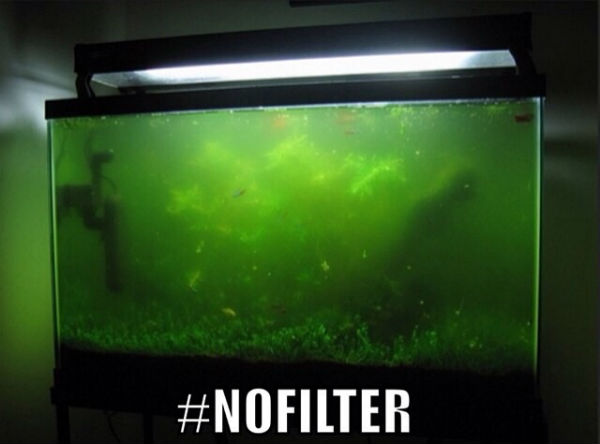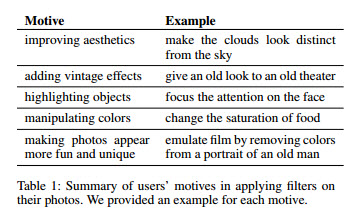Remember when people were super-proud to snap photos of stunning scenery on their skill-demanding smart-phones, and then enthusiastically post the whimsical images to their Instagram feed, branding them with the ultimate badge of iPhotography honor; #nofilter?
The glory! The achievement! How boldly they upheld the commandments of authentic photography, refusing to succumb to the cosmetic bait so blasphemously encouraged by their camera, which is actually a phone, which is essentially now a computer, but it lets you take really great photos.
Well, pride be dammed because the babbling brooks of the mainstream have spoken.
Thanks to the help of people who should definitely be solving bigger problems, we now know that #nofilter is #nobueno.

Get it? Man, those fish probably aren’t happy…
A study was recently released by Yahoo! Labs, and after thorough examination of over seven million shared photographs (4.1 million of them from Instagram), they found that filtered images are up to 21% more likely to be viewed than unfiltered images, and up to 45% more likely to inspire a comment.
Which is very relevant information considering that, “for the casual photographer, the act of sharing is the primary intention when taking mobile photos…”
According to the study, these were the main reasons given for filter usage:

What’s interesting to note is that both the casual mobile photographer and the “serious hobbyist” often use filters on their photos, but a great philosophical divide exists, as the hard-cores express clear resentment towards the ease with which the content of a photo can be forsaken and altered into an item of misleading beauty.
“A lot of these apps, they just pile stuff on top of stuff on top of stuff,” said one subject of the study. “Basically, pardon my French, they’re taking a really shitty photograph, and they’re putting so much stuff on top of it that it doesn’t really matter anymore. You don’t even see the image.”
Another participant put it this way:
“My 10-year-old cousin, he takes the app. He takes the photo. He passes it through filters and it’s beautiful. You feel great and you feel a bit sad. Sad because the actual art in it is lost into the filter.”
But what the study data actually concludes is that, with the exception of making things look “antique”, the filters that drive the most engagement are corrective in nature; i.e. in contrast and exposure. Which is pretty much why serious hobbyists say they use filters; lighting, focus, and colour manipulation.

It’s either a filter, or the apocalypse is happening.
“We find the less-engaging filters exhibit transformation effects which are exaggerated and often cause photographic artifacts and/or loss of highlight details,” write the authors.
Now while this study has some interesting implications for the product marketers among us, to the every-day casual Androidographer, this is all simply to confirm some pretty intuitive circular behavior; we know a lot of people use filters, and since they use them under the motivation to make things look better, we can safely assume that they will think other people’s stuff looks better when filters have been applied.
And do they even know when someone else has applied a filter?
Probably not.
Does it really even matter?
No.
So just remember, the next time you want to post a photo in an effort to drum up some likes, or maybe even a couple of illustrious shares, you could hashtag it with #NoFilter. But at the end of the day, #NoBodyCares.

